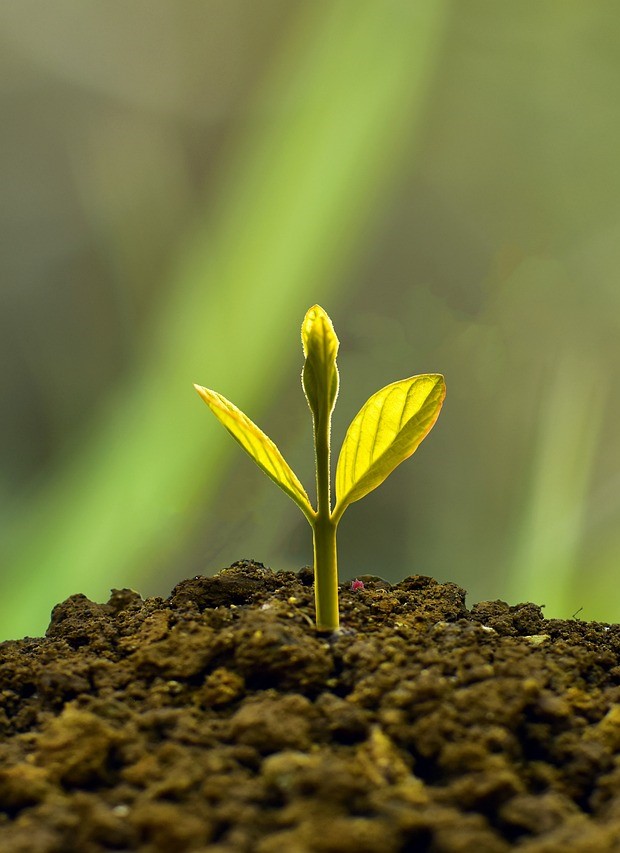Main fertilisers 101
In short, main fertilisers contain major nutrients. Today's article describes the available fertilisers and tries to answer the frequently asked question: How to choose the right fertiliser out of the plethora of available bottles?

What are major nutrients?
Major nutrients are the ones plants need in large quantities. They’re also called macronutrients. These nutrients are absolutely necessary - plants grow slowly or die without them.
Where do plants get essential nutrients?
The most important nutrients are carbon (C ), oxygen (O) and hydrogen (H). Plants get them from water and air. They get the rest from the substrate. To support their growth, we usually add the primary macronutrients, nitrogen (N), phosphorus (P) and potassium (K), which are also called NPK), using fertilisers.
Essential nutrients also include secondary macronutrients – calcium (Ca), magnesium (Mg) and sulphur (S), which are usually available in the substrate, so there’s less of them in fertilisers.
What are the differences between main fertilisers?
Fertiliser manufacturers plan the nutrition to perfectly fit the needs of the plant. They account for different developmental stages, plant species and their own preferences and experience. Each manufacturer has their own approach to growing and experience (some even have their own science labs!), which is why there are so many different fertilisers.
1. Growth phase
Fertilisers are often designed for a specific developmental stage. Beginners prefer universal fertilisers for the entire cycle (you use two or three bottles simultaneously) or the single component ones for growth and flowering (you use first one, then the second bottle when the plant starts blooming). Multi component fertilisers divide the nutrition into four bottles (two for growth and two for flowering), which makes them more versatile and adjustable according to the plant variety and environment.
- Fertilisers for the vegetative phase
Fertilisers for growth contain more nitrogen than others because the plants need more of it during the vegetative phase. We usually call them „Grow“. They’re sometimes available in two parts marked „Grow A“ and „Grow B“.
- Fertilisers for the flowering phase
Bloom fertilisers contain more potassium and phosphorus to support flowering and ripening. They’re usually called „Bloom“, and just as the grow fertilisers, they’re sometimes divided into two parts called „Bloom A“ and „Bloom B“.
- Universal fertilisers
They contain everything a plant needs for a growth cycle. The dosage changes according to the developmental stage of the crop. These fertilisers are usually in two A+B bottles or in three – usually called „Grow“, „Bloom“ and „Micro“.
- Fertilisers for seedlings and cuttings
Feed for the smallest plants is usually less concentrated to prevent over-fertilisation.
2. Cultivation method
The cultivation method directly influences the plants‘ needs, which is why there are fertilisers specialised for soil substrates, coco, hydroponics and aeroponics. For example, plants growing in coco substrates often suffer from calcium and magnesium deficiencies, so specialised fertilisers contain more of these elements. Hydroponic fertilisers are usually more concentrated because the plants can’t get nutrition from the substrate.
Some fertilisers are universal or can be used in more than one method. For example, the world renowned Dutch Formula by Advanced Hydroponics is developed for hydroponics but does wonders in coco or soil if you use half dosage.
3. Composition
- Mineral fertilisers
The most common way of fertilising these days. They contain artificial compounds optimised for plant growth and easy absorption. Mineral fertilisers are efficient and concentrated. You usually precisely know what is in them. They won’t spoil in nutrient solution tanks.
- Organic fertilisers
Organic fertilisers contain extracts from natural substances. They’re closer to the natural sources of nutrition. We recommend them especially for beginners because it’s nearly impossible to over-fertilise with organics. They’re often suitable for organic (or at least more sustainable) farming but never for hydroponics.
- Bio-mineral fertilisers
These fertilisers combine the best of both worlds. The individual components have to be carefully picked as some organic materials don’t work well with mineral compounds.
4. State of matter
- Liquid fertilisers
Tried and tested classic for home plant growing. The fertiliser is diluted in water which is then used to water the plants. The fertiliser works immediately, and larger doses lead to over-fertilisation, so it’s important to use them carefully and regularly.
- Solid fertilisers
Solid fertilisers are usually powdered or shaped as tablets. They’re either mixed into the irrigation water or added directly into the substrate. The nutrients are released gradually, one dose can last for several months.
Which fertiliser is the best?
The lengthy description above should help you ask four basic questions. Your answers will lead you to an appropriate fertiliser.
- Do you prefer more or less parts? What growth phase is the plant in?
- Where and how are you growing the plant?
- Do you prefer a mineral or an organic fertiliser?
- Do you want to fertilise regularly or just once or twice?
The rest (mostly which brand to pick) depends on your personal experience and preferences. We at Higarden recommend (and we had to choose from many) the single-component nutrition by BioNova available in options for soil, hydroponics and aeroponics. They also have a special option for autoflowering plants. If the simplicity of solid fertilisers caught your eye, BioTabs is definitely the way to go. For coco substrates, we recommend the magnificent feed by Shogun and when it comes to hydroponics, Advanced Nutrients and Terra Aquatica are simply outstanding.
There is a fair amount of fertilisers available. If you have any questions about picking the right one or if you need more information on a product, don't hesitate to contact us at info@higarden.eu.
We recommend:
More articles:


